2010 Polaris Racing Preview
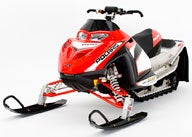
Major team efforts, minor changes to proven racer
Polaris unveiled its 2010 600 IQ race sled at the recent Hay Days event in Minnesota and announced plans to once again dominate North American racing. The latest iteration of the 600 IQ reflects the old adage, “If it ain’t broke, don’t fix it.” Well sort of, in actuality the 2010 Polaris 600 IQ racer underwent tweaks to make it a better all around race sled, while leaving alone the things that have made it successful.
Polaris’ snowmobile engineering team decided not to totally mess with the success that gave the 2009 race version these racing highlights:
• In ISOC, Polaris racers finished 1-2-3 in Pro Open points and 1-3 in Pro Super Stock points.
• In the Canadian Snocross Racing Assn. circuit Polaris racers finished 1-2 in points in both Pro classes, and,
• Polaris won both Pro titles on the Rock Maple Racing circuit.
To build on last season’s successes, Polaris engineers focused on further enhancing durability, improving drivability and responding to a few requests made by racers.
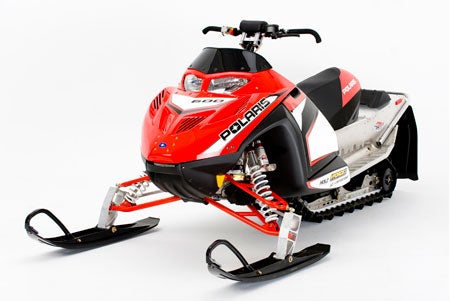 The IQ racer front end appears more aggressive thanks to redesigned side panels.
The IQ racer front end appears more aggressive thanks to redesigned side panels.“In our opinion, we have one of the most durable units out there and it’ll be back for this coming year with some very minor changes,” says Polaris Racing Manager Tom Rager, Sr.
Factory engineers, using input from their racing drivers, sought areas of the race sled that they could improve.
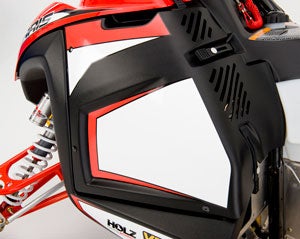 Polaris engineering narrowed the side panel area for this season.
Polaris engineering narrowed the side panel area for this season.“We were pleased with last year’s package as it relates to the overall sled performance and its reliability,” said Polaris Sr. Project Engineer David Borowicz, who has overseen race sled development the past two seasons. “For 2010, we focused our attention on slight changes that will help improve the reliability even further. We also responded to a few specific requests from drivers and teams.”
“…Polaris engineers focused on further enhancing durability, improving drivability and responding to a few requests made by racers.”
Built on the Polaris’ IQ Chassis, the 2010 race sled features a lightweight Independent Front Suspension (IFS), powerful Polaris Liberty 600 2-stroke twin and superb braking and driver ergonomics. But there was room to improve and Borowicz and his engineering team made specific enhancements to the 2010 Race Sled.
| 2010 Polaris Race Sled Enhancements |
| • New left- and right-hand fenders with a sculpted design to create a narrower front |
| • A change to the left-hand bulkhead brace, resulting in more clearance to the drive clutch |
| • Pilot holes added to the suspension rail beams to provide more options for coupler block placement |
| • Improvements to the front seat bracket to prevent nut strip-out |
| • Plus, a new headlight dimmer switch, which is now located on the console (not the handlebar as before) |
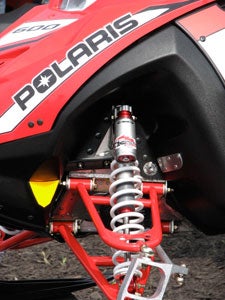 Walker Evans shocks control the IQ’s 11.5-inches of front suspension travel.
Walker Evans shocks control the IQ’s 11.5-inches of front suspension travel.Because suspensions are critical to a race sled’s success, Polaris engineering worked diligently in this area. Polaris’ Independent Front Suspension was designed to provide a light – yet extremely durable and reliable – front end that delivers responsive handling with minimal steering input.
Borowicz said, “When we designed this front end, the goals were to decrease the IFS weight, retain the durability, and improve steering effort. The lower weight and steering effort help to reduce rider fatigue, helping to keep the racers fresh, but the durability is critical to ensure that drivers can finish the races they start. It’s a proven, reliable IFS that offers long travel, a large steer angle, minimal bump steer and easy handling.”
The IFS uses lightweight aluminum idler arms and it has ski spindles developed jointly by Polaris and Holz Racing Products. Walker Evans supplies aluminum IFP (Internal Floating Piston) 16-position compression-adjustable shocks with piggyback reservoirs. The IFS has 11.5″ of travel while the IQ Rear Suspension has 13.9″ of travel.
The front track shock of the IQ Rear Suspension is a Walker Evans aluminum springless shock and the rear track shock is a Walker Evans aluminum IFP 16-position compression-adjustable shock with a large-body reservoir.
Since the major race circuits require 600-class engines, Polaris racers had the advantage of using a Polaris engineered and built Liberty 600 twin that was specifically tuned to deliver excellent acceleration and outstanding power.
“We achieved our speed and power last year, so we’re returning with a nearly identical engine that should perform well and definitely deliver the reliability needed to win races and championships,” Borowicz said.
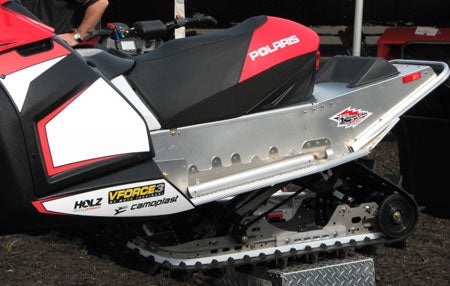 Special 14.75-inch wide by 121-inch long track features a 1.75-inch lug profile.
Special 14.75-inch wide by 121-inch long track features a 1.75-inch lug profile.Complementing the outstanding power is superb braking provided by the Cyclone master cylinder and lever teamed with a liquid-cooled “Phantom” dual-piston caliper.
The Rush Is On
In addition to snocross, the Polaris Snowmobile Racing program will campaign the new Rush 600 in various cross-country venues and other IQ race sleds powered by Polaris Liberty engines in virtually every racing discipline this winter.
“We direct a lot of resources toward winning in Snocross, and fortunately we’ve been successful there. But we are also committed to winning in other disciplines, and we really like the racers we have on Polaris sleds in ovals, cross-country and hillclimbs,” said Rager.
Snocross Teams
Hentges Racing and Judnick Motorsports have formed a technical alliance and will share sled data and pool resources for sled construction. Many time Eagle River champion and former NASCAR racer Tim Bender will serve as Technical Director for both teams and will be based out of the Polaris Race Shop in Wausau, Wis.
On the ISOC circuit, the Hentges Racing Pro racers finished 1-2-3 in Pro Open and finished first and third in Pro Super Stock. TJ Gulla won Pro Open. Brett Bender took second in Open points and was named Pro Rookie of the Year.
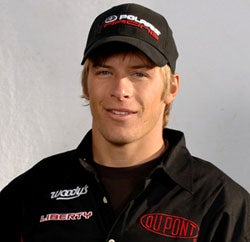 Defending ISOC Pro Super Stock champion Levi LaVallee is launching his own team this winter.
Defending ISOC Pro Super Stock champion Levi LaVallee is launching his own team this winter.Defending ISOC Pro Super Stock champion Levi LaVallee is launching his own team this winter. The former Hentges Racing team member will be based in the Wausau shop with the Hentges and Judnick teams. Team LaVallee Motorsports will appear in both Pro and Semi-Pro.
Judnick Motorsports will be back with Ross Martin, now fully recovered from a broken hip suffered in a Winter X Games practice last winter. Teammate Matt Judnick is expected to rise in the Pro points races this year.
Scheuring Speed Sports has a new look with two new Pro racers, Robbie Malinoski and Andrew Johnstad. Malinoski is a past champion in both Pro classes and Johnstad is a second-year Pro.
Ontario-based Bourque’s Polaris Snocross Racing Team dominated the Canadian snocross circuit last season and will have Dave Joanis for the ISOC schedule.
New York-based Hulten Speed Sports/JOJO Energy plans to run the RMR circuit and also compete on the ISOC circuit. The team saw driver Danny Poirier dominate Rock Maple Racing (RMR), winning both Pro titles and winning every Pro Open final in which he ran. He will team with Bobby LePage, who finished third in ISOC’s Semi-Pro Open last winter.
Idaho-based Leighton Motorsports will expand its schedule to run the entire ISOC schedule, but will also compete in Mountain West Racing (MWR) events as their schedule permits.
Other Venues
Ice Ovals — One of the top teams campaigning for Polaris on the ice ovals will be Team Wahl from Wahl Bros. Racing. Rider Dustin Wahl claimed the Pro Champ title at the Beausejour opener and the Formula 1 Open and 600 Open classes at Eagle River.
Cross Country — Leading the charge for Polaris in Cross Country racing aboard the new Polaris 600 Rush will be experienced Pro champions Gabe Bunke and Corey Davidson, both of whom will compete on the United States Cross Country (USCC) circuit.
Bunke finished second in Pro 600 points and fifth in Pro Open points. He also received the USCC Iron Man award at the 2009 awards banquet in recognition of his having raced in every USCC event – 43 consecutive races. Davidson finished fifth in Pro 600 points and fourth in Pro Open points last season.
Hillclimb — Rager expects Polaris’ hillclimb effort out West to be very successful again this winter. Among the top competitors he’ll have back on Polaris sleds will be the highly successful Keith Curtis, who two seasons back won three Stock titles plus Stock King of the Hill at the Jackson Hole World Championship Snowmobile Hillcimb.
The Polaris hillclimbers will dedicate the season to their mentor, Rick Ward, the legendary competitor and long-time manager of the Polaris hillclimb program. An 18-time World Champion, Ward died in September following a motorcycle accident. His career was spent exclusively on Polaris snowmobiles.
| 2010 Polaris 600 IQ Racer Specs | |
| Engine | Polaris Liberty 599cc, 2-stroke, liquid-cooled, twin; 2 Mikuni TM 40 carburetors; Oil-injection using pre-mix 32:1 ratio fuel; digital ignition |
| Horsepower | N/A |
| Drive | Polaris P85 with lightweight TEAM roller secondary |
| Front Suspension | IQ dual A-arm suspension; Walker Evans piggyback reservoir, IFP 16-position compression adjustable gas shocks; 11.5-inches of travel |
| Rear Suspension | Polaris lightweight IQ parallel rail with Walker Evans aluminum springless shock on front arm and Walker Evans IFP aluminum, 16-position, Compression Adjustable with large diameter body on rear arm; 13.9-inches travel |
| Brake | Polaris Phantom, dual-piston hydraulic |
| Length | 115 in |
| Width | 48 in |
| Height | 47 in |
| Ski Stance | 43 in |
| Track | 14.75 x 121 x 1.75 Sno-XT |
| Weight | N/A |
| Fuel Capacity | 4.0 US Gal |
| MSRP | N/A |
Related Reading
Gulla, LaVallee win Pro championships
Polaris sweeps Pro classes
2010 Polaris Rush Review




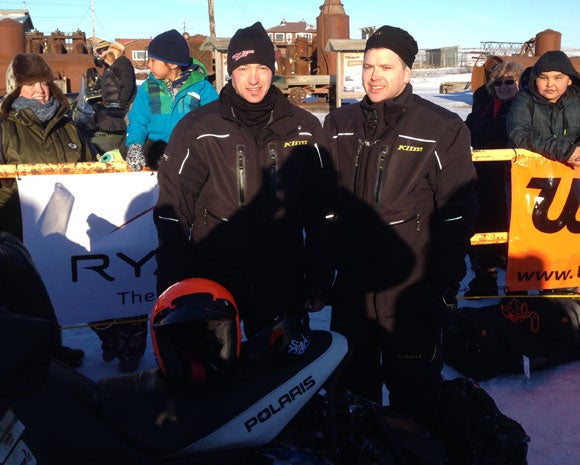
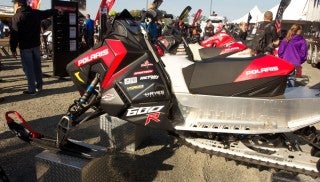


 Your Privacy Choices
Your Privacy Choices